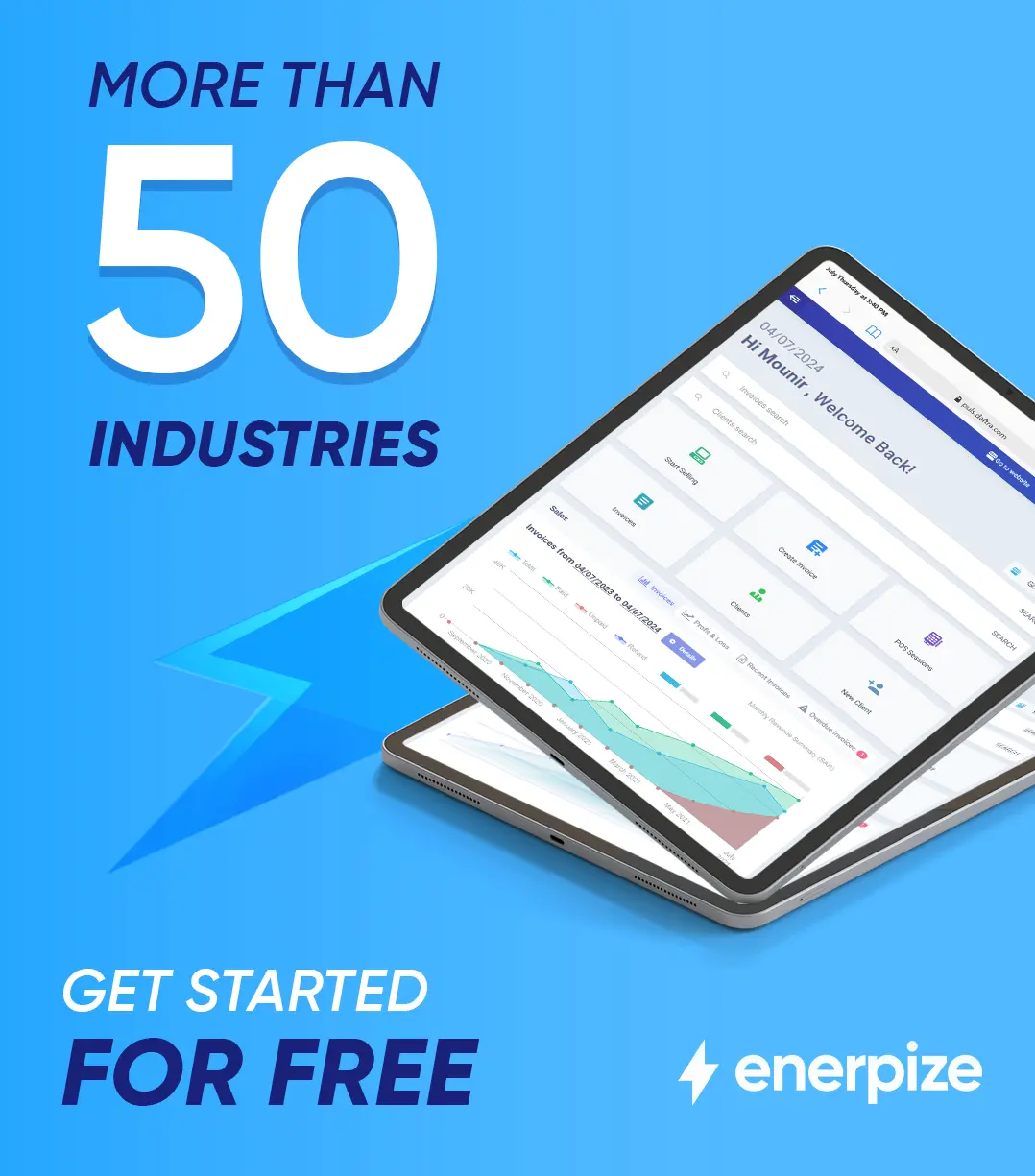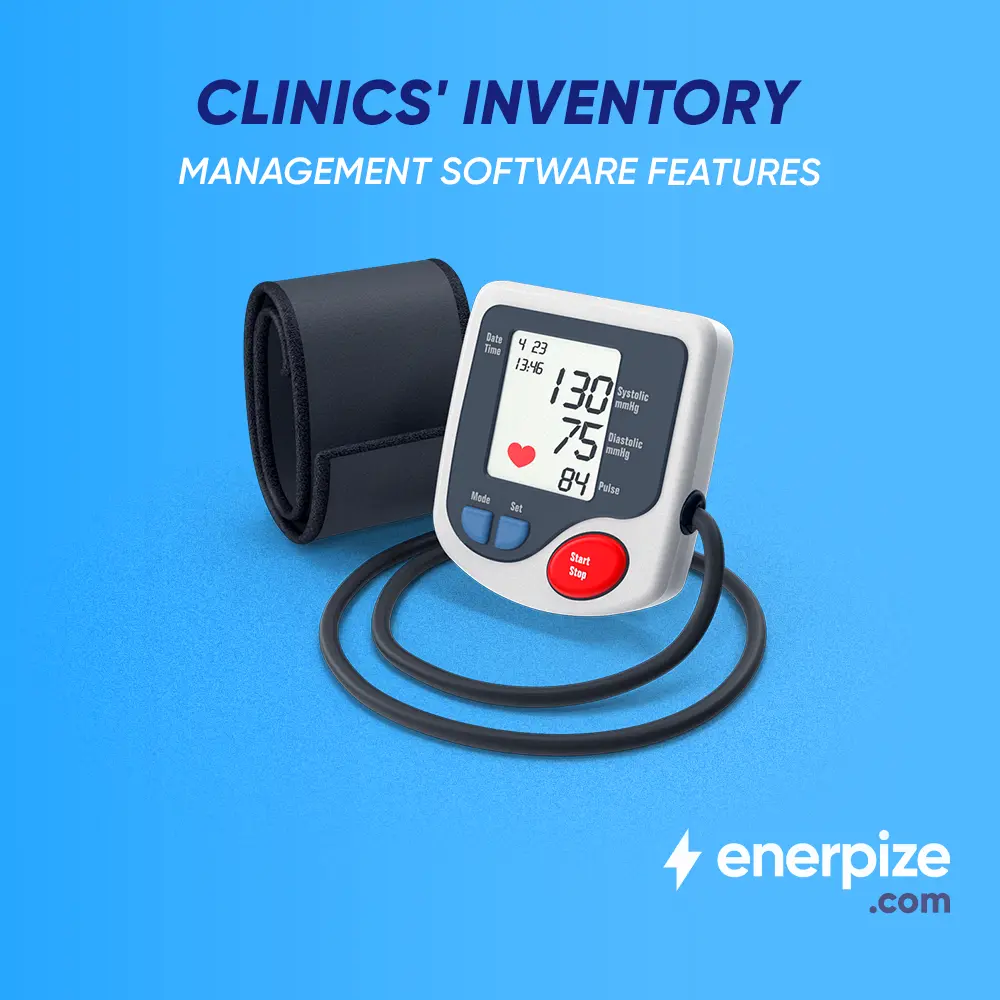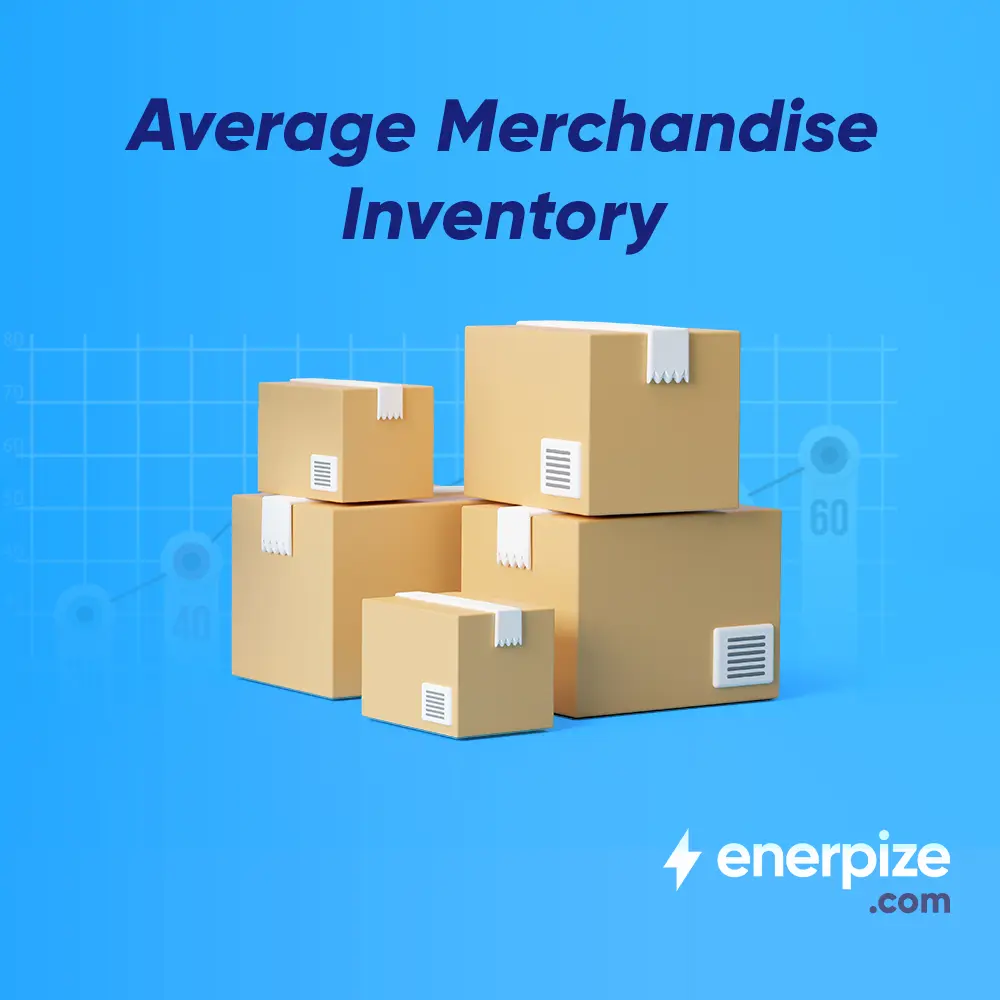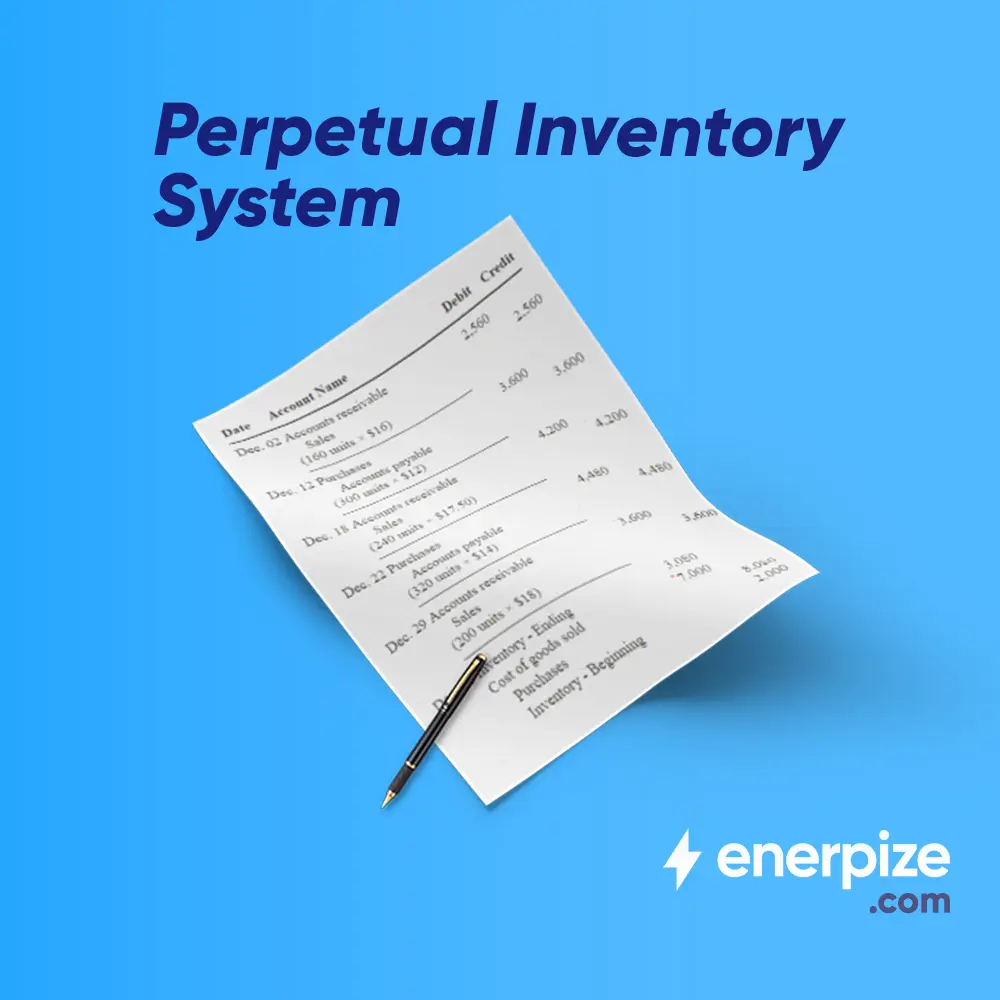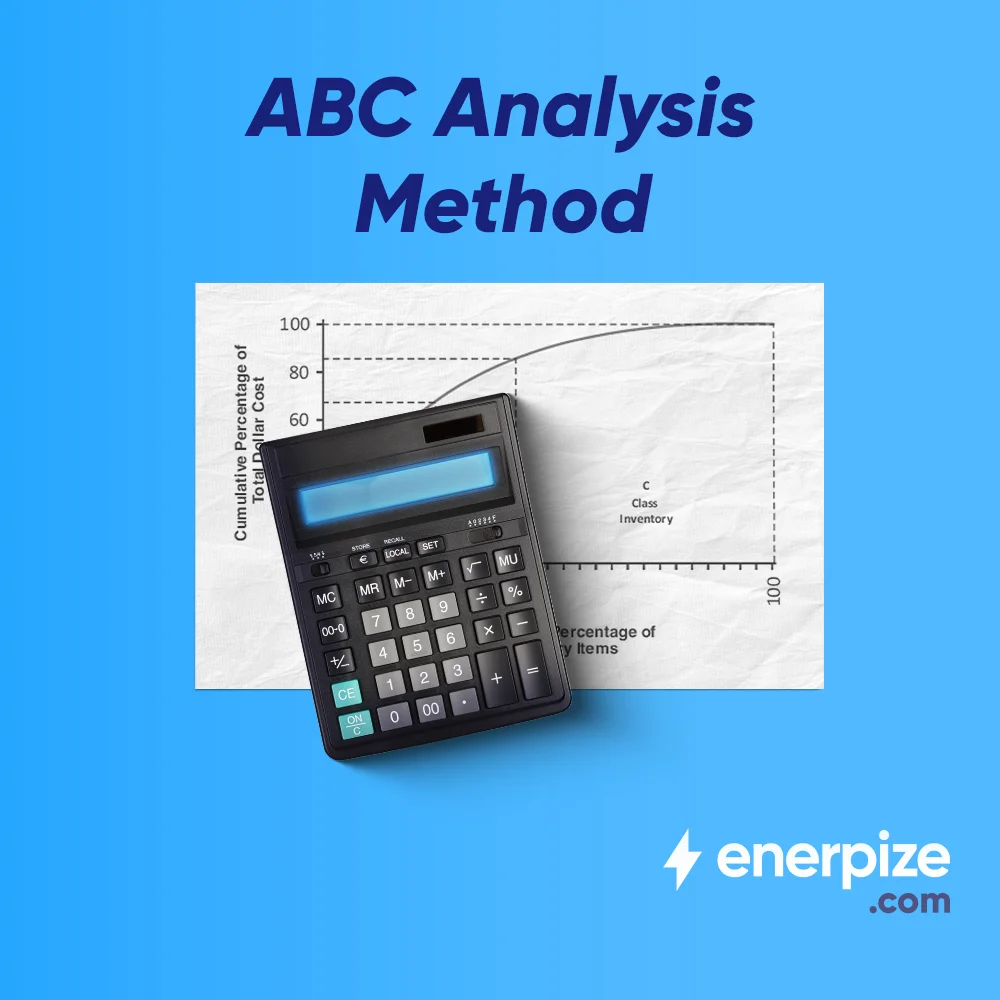Author : Haya Assem
Reviewed By : Enerpize Team
Vendor Managed Inventory (VMI): Advantages and Disadvantages
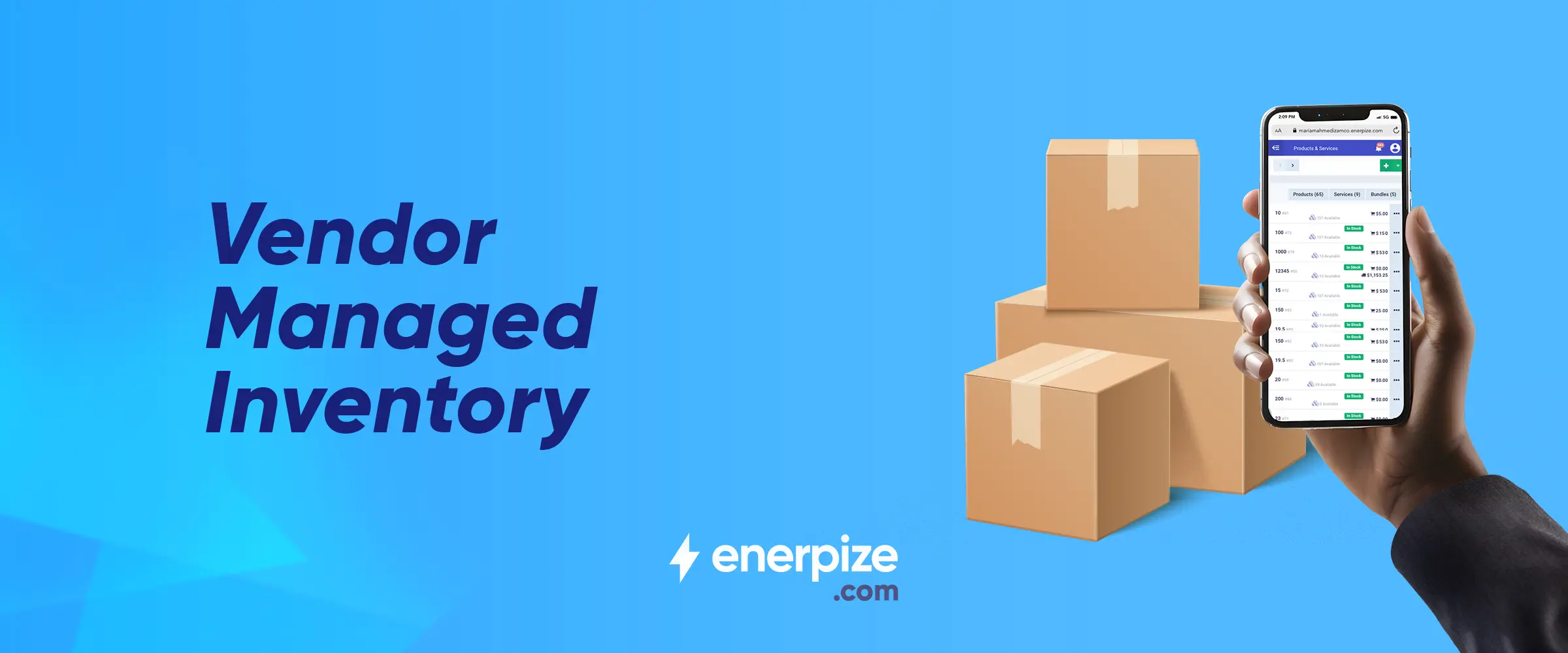
Table of contents:
- Key Takeaways
- What is Vendor-Managed Inventory?
- The Purpose of Vendor-managed Inventory
- What are the Main Types of Vendor-Managed Inventory?
- How does a VMI system work?
- Main Advantages of Vendor-Managed Inventory
- Are there Disadvantages to Vendor-Managed Inventory?
- Vendor-Managed Inventory Best Practices
- How Enerpize Streamlines Your Inventory Management
Inventory management may be challenging, and in an ever-evolving shopping world, consumers have grown their expectations for product availability, which necessitates coordination and effort from all parties. To stay competitive, retailers, distributors, and suppliers must collaborate. And this is where the Vendor-managed inventory comes into play.
Vendor-managed inventory (VMI) is a supply chain management strategy that redefines the conventional roles of suppliers and customers. VMI places the responsibility of inventory management squarely on the vendor's shoulders, resulting in a more collaborative and streamlined process.
It's crucial first to understand what vendor-managed inventory entails and explore the purpose behind adopting such a model. Additionally, we'll explore the main types of VMI and shed light on the significant advantages they provide to suppliers and customers.
However, like any business strategy, VMI has its challenges, and we'll also explore potential disadvantages. By addressing these key aspects, we aim to provide a comprehensive understanding of vendor-managed inventory and its implications for modern supply chain dynamics.
Key Takeaways
- Vendor-managed inventory (VMI) transforms supply chains by assigning inventory management to suppliers, enhancing collaboration among both parties. It addresses rising consumer expectations, streamlining processes to stay competitive.
- VMI’s primary purposes include enhancing efficiency, ensuring timely product supply, improving customer satisfaction through active inventory management, fostering collaboration between suppliers and buyers, and ultimately creating a more responsive and efficient supply chain.
- VMI types include Continuous Replenishment for consistent flows, Bulk VMI for larger, less frequent orders, Consignment VMI to reduce financial risk, VMI Automation utilizing technology, and JIT VMI to reduce excess stock and storage expenses.
- VMI provides multiple advantages to supply chain efficiency. It minimizes the risk of stockouts and overstocking, enhances demand forecasting with reliable data, reduces human errors through automation, results in cost savings, and promotes better sales performance through improved communication and transparency.
- It has some drawbacks including data security concerns, loss of control, less agile market response, and implementation costs. Businesses must weigh these factors when considering VMI adoption.
What is Vendor-Managed Inventory?
Vendor-managed inventory (VMI) is a supply chain management approach that shifts inventory management responsibilities from the buyer to the supplier. In this collaborative arrangement, the supplier actively monitors and replenishes the buyer's inventory based on agreed-upon variables such as sales data, consumption patterns, and stock levels.
Essentially, the supplier uses real-time data to handle replenishment proactively, guaranteeing that the buyer maintains ideal inventory levels without the need for constant oversight. Buyers usually implement VMI to enhance supply chain efficiency, eliminate stockouts and overstocks, and improve overall inventory performance.
Read Also: Benefits of Using Inventory Management Software for Medical Clinics
The Purpose of Vendor-managed Inventory
The purpose of Vendor-Managed Inventory (VMI) is to streamline and optimize inventory management throughout the supply chain. VMI's main purposes are as follows:
Efficient Process
Vendor-managed inventory (VMI) is an inventory management system in which suppliers retain control over the stock levels of a buyer even after the items have been supplied. The major reason for implementing such a system is to reduce the buyer's administrative burden and to ensure product supply is on time.
Customer Satisfaction
The supplier's main purpose in this arrangement is to improve customer satisfaction by efficiently managing the buyer's inventory. This active management ensures that the supplier's product is consistently present on store shelves.
Enhanced Collaboration
VMI doesn't only aim to reduce administrative challenges but also encourages supplier and buyer collaboration. Both parties may make informed decisions and adapt swiftly to changes in consumer preferences or market conditions by exchanging relevant data and insights.
Responsive Supply Chain
VMI implementation supports the main purpose of fostering a more responsive and collaborative supply chain. This strategic approach benefits both suppliers and buyers by increasing overall efficiency, reducing operating costs, and enhancing customer satisfaction.
Read Also: Average Inventory: Definition and How To Calculate
What are the Main Types of Vendor-Managed Inventory?
Vendor-managed inventory revolutionizes inventory management by offering various types, each with particular characteristics to meet the needs of all customers and vendors. Here are some examples:
Continuous Replenishment
In this system, the supplier regularly examines the buyer's inventory levels and automatically replenishes products as needed. Orders are placed frequently and in small amounts, ensuring a consistent flow of products.
Bulk VMI
In this approach, the supplier manages larger quantities of inventory on behalf of the buyer. The focus is often on bulk shipments, and the supplier is responsible for restocking products in larger quantities at less frequent intervals.
Consignment VMI
The supplier retains ownership of the inventory under consignment VMI until the buyer uses or sells the products. The buyer only pays for the products when they are used or sold, reducing the buyer's financial risk.
VMI Automation
Technology and software play an important role in monitoring and maintaining inventory levels in an automated VMI system. Without the need for user involvement, automated processes may track sales data, forecast demand, and trigger replenishment orders.
JIT VMI (Just-in-Time)
This system focuses on delivering inventory to the buyer precisely when it is needed, minimizing excess stock and storage costs. The goal is to synchronize production and delivery with demand, reducing the need for large inventories.
How does a VMI system work?
A Vendor-Managed Inventory (VMI) system works by allowing buyers and suppliers to exchange data collaboratively. The process starts with the exchange of sales forecasts, inventory levels, and demand patterns. Using this data, the supplier generates purchase orders using automatic triggers, providing prompt and precise responses to changes in demand.
Upon fulfillment, the buyer's inventory is automatically replenished, and real-time updates on inventory levels and performance metrics are shared between the parties.
Continuous monitoring and feedback sessions allow for adjustments for optimal performance, turning VMI into a simplified and automated approach to inventory management, reducing stockouts, lowering overstocking concerns, and creating a responsive and collaborative supply chain.
Main Advantages of Vendor-Managed Inventory
VMI's collaborative technique provides various advantages that contribute to the supply chain's efficiency, responsiveness, and overall success.
The advantages of VMI extend across numerous aspects of modern inventory management, from reducing stockouts and holding costs to promoting strategic cooperation and minimizing operational risks. The following are the main advantages of VMI:
Less Risk
VMI reduces the risk of stockouts by allowing suppliers to monitor and restock inventory, ensuring items are consistently available to satisfy demand. Additionally, it lowers the risk of overstocking, reducing holding costs, and saving capital for other company requirements.
Improved Demand Forecasting
VMI systems rely on reliable data because they use current sales statistics to promote more strategic inventory ordering, improve demand forecasts, and help companies align inventory levels with actual market demands.
Reduced Human Errors
Vendor-managed inventory (VMI) minimizes the frequency of human mistakes in inventory management significantly. The automation and real-time monitoring included in VMI systems reduce the dependency on human operations, lowering the chance of data input errors, miscalculations, and oversight errors.
Cost Savings
Efficient inventory management in VMI results in cost savings, such as lower holding costs, fewer stockouts, and more efficient supply chain processes.
Enhanced Data Insights
As the vendor and company relationship develops, the supplier can forecast demand and make data-driven decisions to deal with seasonal or market shifts.
Enhanced sales performance:
As the supplier improves its understanding of genuine customer demand through the VMI process, it emerges as a more effective collaboration with consumers, increasing its chances of sales growth.
Through the promotion of increased transparency and communication, the supplier is better equipped to respond to the evolving conditions and future strategies of its customers.
Read Also: Perpetual Inventory System: Definition, Formula, Calculations
Are there Disadvantages to Vendor-Managed Inventory?
While Vendor-Managed Inventory (VMI) has several advantages, it is essential to be aware of the following disadvantages:
Data Security Concerns
Buyers give the supplier control over inventory management in a VMI system. Companies may be exposing their data at risk by granting access to their data and inventory to a third party.
Loss of Control
Some businesses might have objections to having an outsider manage their inventory, especially if the goals and strategies of the supplier and customer are not aligned, conflicts may arise, impacting the effectiveness of the VMI system.
Less Agile Market Response
Due to several factors, vendor-managed inventory may result in a less agile market response. While the collaborative aspect of VMI promotes efficiency, it can cause delays in decision-making and response. The reliance on supplier data and coordination can hinder the response to unexpected market changes or shifts in consumer demand.
Implementation costs
The initial setup expenses for adopting VMI systems, including technical infrastructure and training, can be significant. These costs may be difficult for small businesses to handle.
Vendor-Managed Inventory Best Practices
Vendor-managed inventory is a valuable system; however, it has some drawbacks that must be overcome if it is implemented effectively. Here are the best practices for VMI:
Collaborative Communication
Foster open and transparent communication between suppliers and buyers to ensure that both are on the same page. To improve collaboration, discuss sales estimates, inventory levels, and market information on a regular basis.
Negotiate Costs & Set Boundaries
Negotiating fees and setting boundaries involves thorough research, clear communication of expectations, finding a mutually beneficial middle ground, and establishing written agreements to foster positive and sustainable business relationships.
A Well-Planned VMI Strategy
Developing goals and metrics is critical for a successful Vendor-Managed Inventory strategy as it provides a clear framework for performance evaluation, ensures alignment with business objectives, and enables continuous improvement in inventory management efficiency and supplier-buyer collaboration.
Keep the Vendor Updated
It is critical to keep vendors updated to maintain a transparent and collaborative relationship. Regular communication ensures that suppliers remain current on changes in demand, market conditions, and any other relevant data that may affect inventory levels or supply chain processes.
Regular Performance Evaluations
Conduct frequent assessments and evaluations of the efficacy of the VMI program. Respond to issues as soon as possible and make constant adjustments based on feedback and performance analysis.
Read Also: ABC Analysis Method: Definition, Advantages, and Disadvantages
How Enerpize Streamlines Your Inventory Management
Enerpize provides comprehensive inventory management by automatically recording product purchases and sales, including details like date, invoice number, unit price, and quantities. You can manually add exchange or supply operations, and the system will update costs and inventory while alerting you of stock shortages.
Easily adjust stock levels, import product sheets, and manage warehouses with automated alerts for low stock and quick purchase orders. Barcode support allows for easy product entry and sales. Track stock using serial numbers, lot numbers, and expiry dates, with automatic notifications for low inventory.
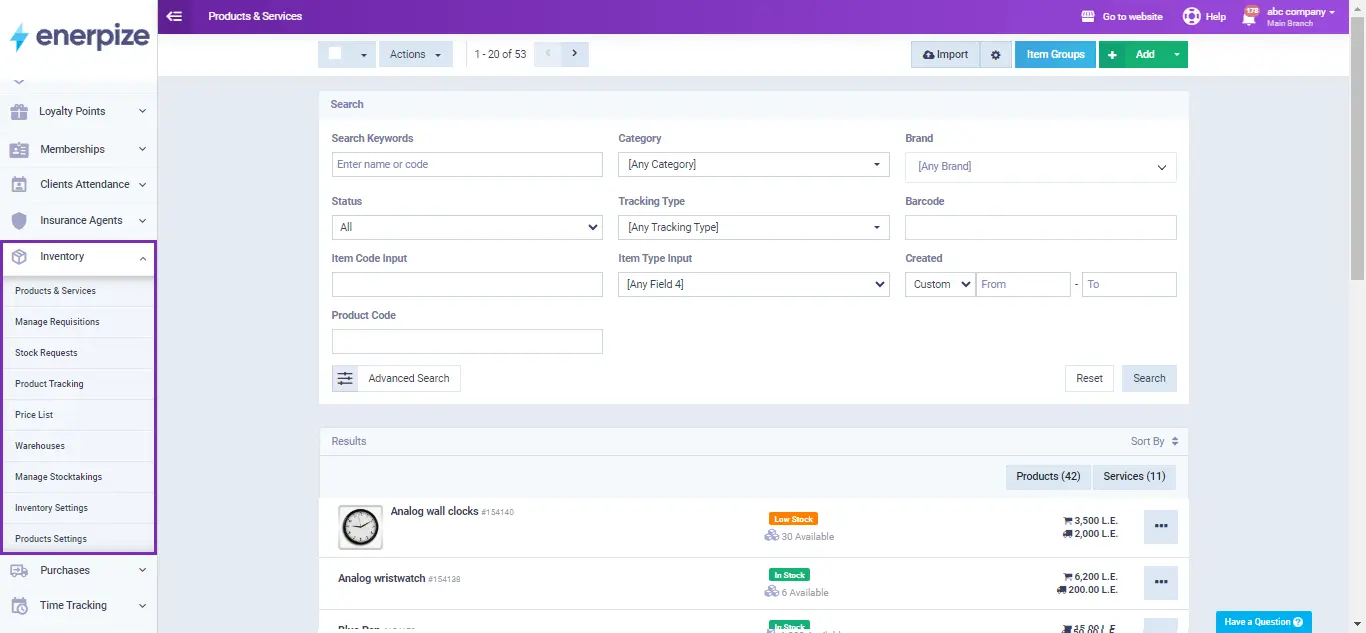
Our free online inventory software also enables the creation and management of composite items and bundles, tracks stock movements, and provides detailed reports and charts for effective inventory and sales management.
Inventory management is easy with Enerpize.
Try our inventory module to manage your inventory

